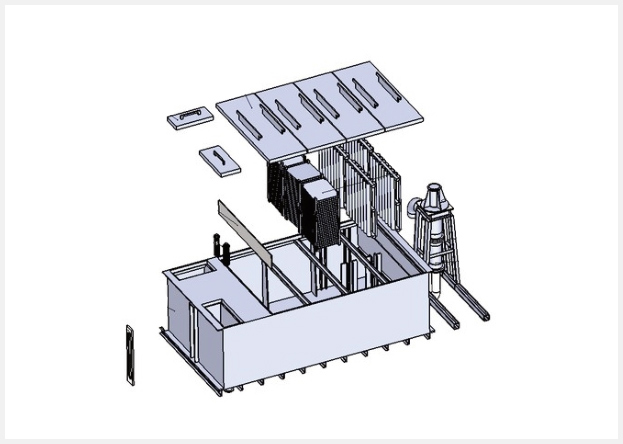Hydraulic factors are optimized during scaling of a
Mixer Settler unit to ensure proper mixing and settling of the two immiscible fluids, typically used in solvent extraction processes. The scaling of the unit involves maintaining and balancing several hydraulic parameters, such as flow rates, residence times, interfacial area, and impeller design, to achieve efficient and uniform mass transfer.
Flow rates: It is crucial to scale the flow rates correctly while maintaining the desired phase separation efficiency. The flow rates for the organic and aqueous phases should be optimized to provide sufficient mixing and settling times. Inadequate flow rates can cause incomplete mixing or insufficient settling, leading to a lower separation efficiency.
Residence times: The residence time of the two phases defines the time available for the extraction process to occur. Scaling ensures that the residence times are appropriate for the required separation. Properly scaled residence times enable effective mass transfer between the phases while preventing carry-over of one phase into the other.
Interfacial area: The interfacial area between the two phases should be maximized to enhance mass transfer. Scaling involves optimizing the sizing and number of stages in the Mixer Settler unit to achieve an adequate interfacial area. This can be achieved by selecting the appropriate mixer and settler dimensions to create efficient contact and separation areas.
Impeller design: The design of the mixer impeller is critical in achieving proper mixing and dispersion of the two phases. When scaling a Mixer Settler unit, careful consideration should be given to the impeller design to provide suitable shear and turbulence for efficient mixing without causing excessive emulsion formation or phase breakage.
Challenges in maintaining uniform flow distribution:
Pressure drop: Variations in the flow rates and viscosity of the two phases can cause pressure drops along the system. These pressure drops can result in uneven flow distribution among the stages of the unit, leading to inefficient mixing and settling. Maintaining a uniform flow distribution requires careful selection and sizing of the equipment, such as pump and piping design, to minimize pressure drop variations.
Density and viscosity differences: The density and viscosity differences between the organic and aqueous phases can be significant in solvent extraction processes. These differences can result in preferential flow pathways, causing uneven distribution of the phases within the Mixer Settler unit. Attempts to maintain uniform flow distribution can be made by incorporating baffles or redistributors to hinder preferential flow and promote more even mixing and settling.
Channeling and bypassing: Improper distribution of the two phases can lead to channeling or bypassing, where the fluids take preferential paths through the unit instead of being evenly distributed. This can result in inefficient mass transfer and reduced separation efficiency. Implementing appropriate flow distributors, redistributors, or internal structures within the unit can help minimize channeling and maintain uniform flow distribution.
Emulsion formation: In some cases, the mixing intensity required to achieve proper mass transfer can lead to excessive emulsion formation, especially when incompatible phases are involved. Emulsions can impact flow distribution, settling efficiency, and ultimately, process performance. Careful control of mixing intensity and impeller design is necessary to minimize emulsion formation and maintain uniform flow distribution.
